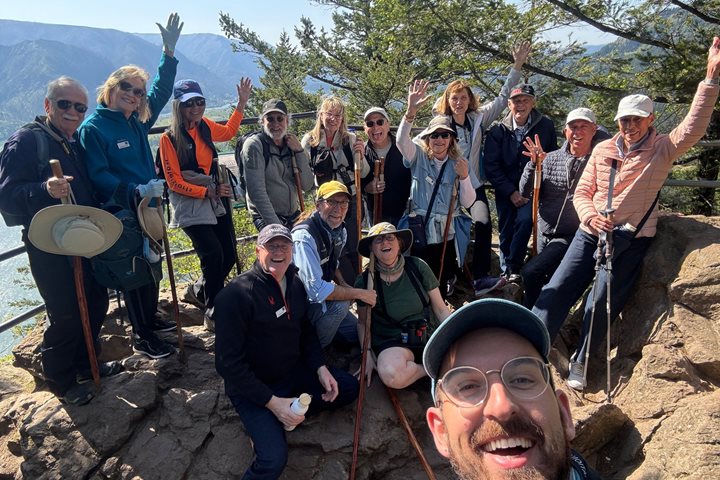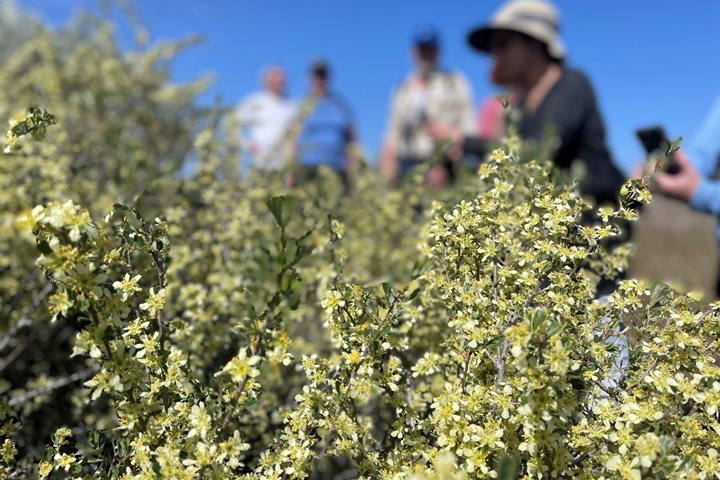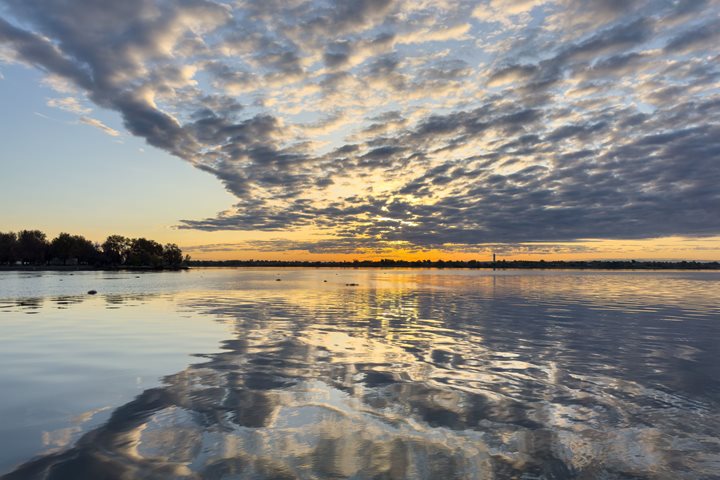Our final full day of excursions was based in Astoria. The oldest continuously occupied settlement west of the Rocky Mountains, it has been a key access point for maritime trade for goods and natural resources throughout the Columbia River Basin. We have reached the westernmost limit of our journey, as it was for the Corps of Discovery during the winter of 1805–6. We began with a visit to the Columbia River Maritime Museum, then had a fine day out, visiting the historic site of Fort Clatsop, Fort Stevens, and the beach at the wreck of the Peter Iredale, an iron bark driven ashore during a storm in 1906. With unusually clear skies and a stiff offshore breeze, how fitting to conclude the day and our week of exploration with a sunset cruise out towards the mouth of the "Great River of the West." We safely returned, of course, avoiding any difficulties in an area known for its swirling currents and shifting sands, then started the overnight transit, up river, to our last port-of-call in Portland, Oregon.
4/24/2025
Read
National Geographic Sea Bird
Hood River
Unseasonably warm and dry weather continued to grace us as we proceeded with our expedition down the Columbia River. The morning was crisp as we disembarked in Hood River, Oregon, but quickly warmed up as we boarded our coaches. Our explorations began at Multnomah Falls, the number one tourist attraction in the state of Oregon. After we experienced this astounding cascade, some of our guests proceeded to Beacon Rock for a scenic climb up this 800-foot tall, aged lava plug. Others went to the Bonneville Fish Hatchery where we visited a local icon, Herman the sturgeon. Then both groups of explorers met at the Columbia Gorge Interpretative Center for Syncline wines and an overflowing helping of intriguing local history. As the superb weather continued, we voyaged back to National Geographic Sea Bird for a lovely afternoon of classic cruising down the Columbia River. Guests enjoyed the sun on deck or an engaging presentation on how climate change is affecting migratory birds. Complimentary water-level views of Multnomah Falls followed, and our last transit through a lock of this trip – a lovely passage through the Bonneville Lock and Dam. Photos by Doug Crispin and Alex Rubenstein







